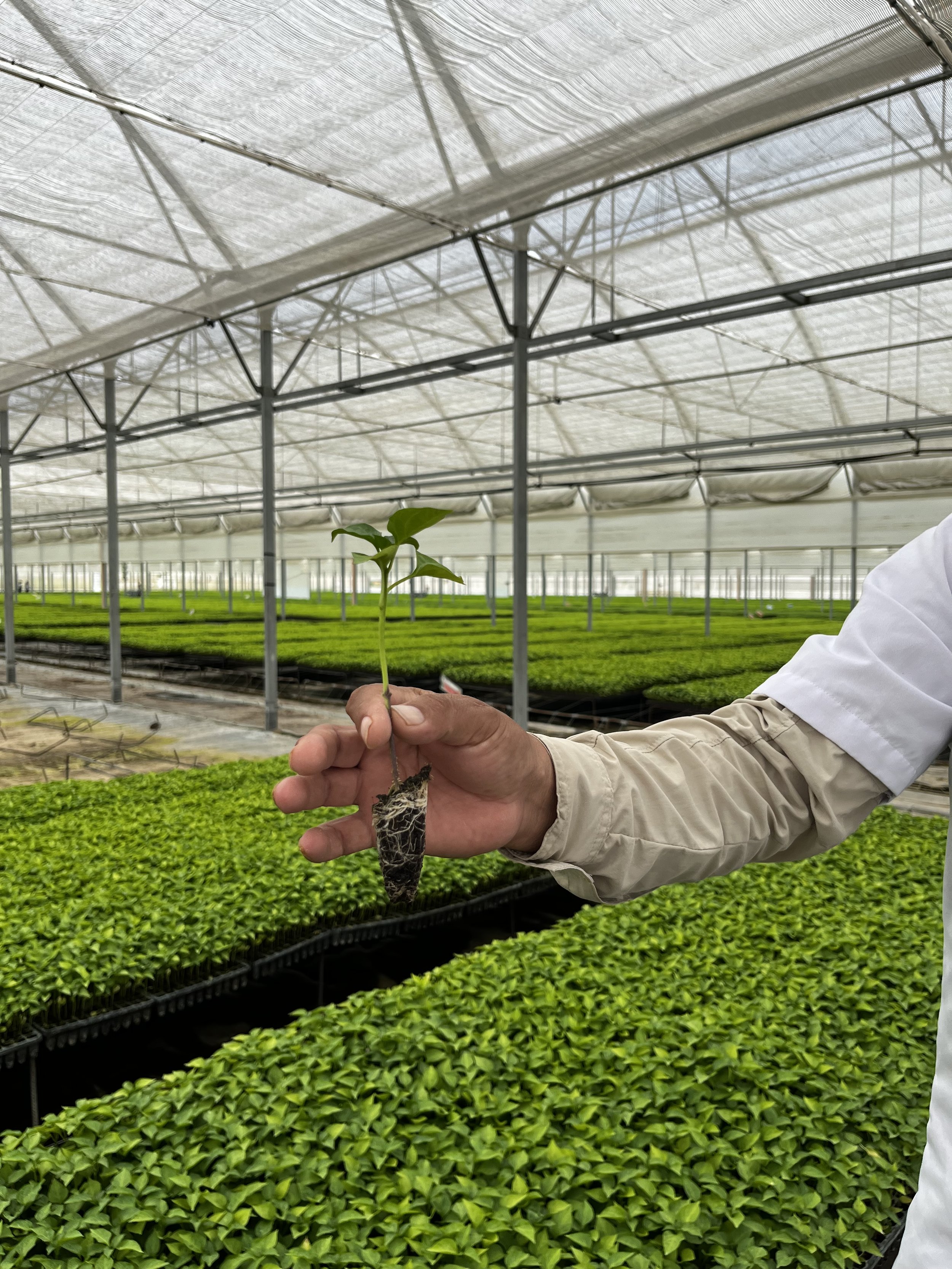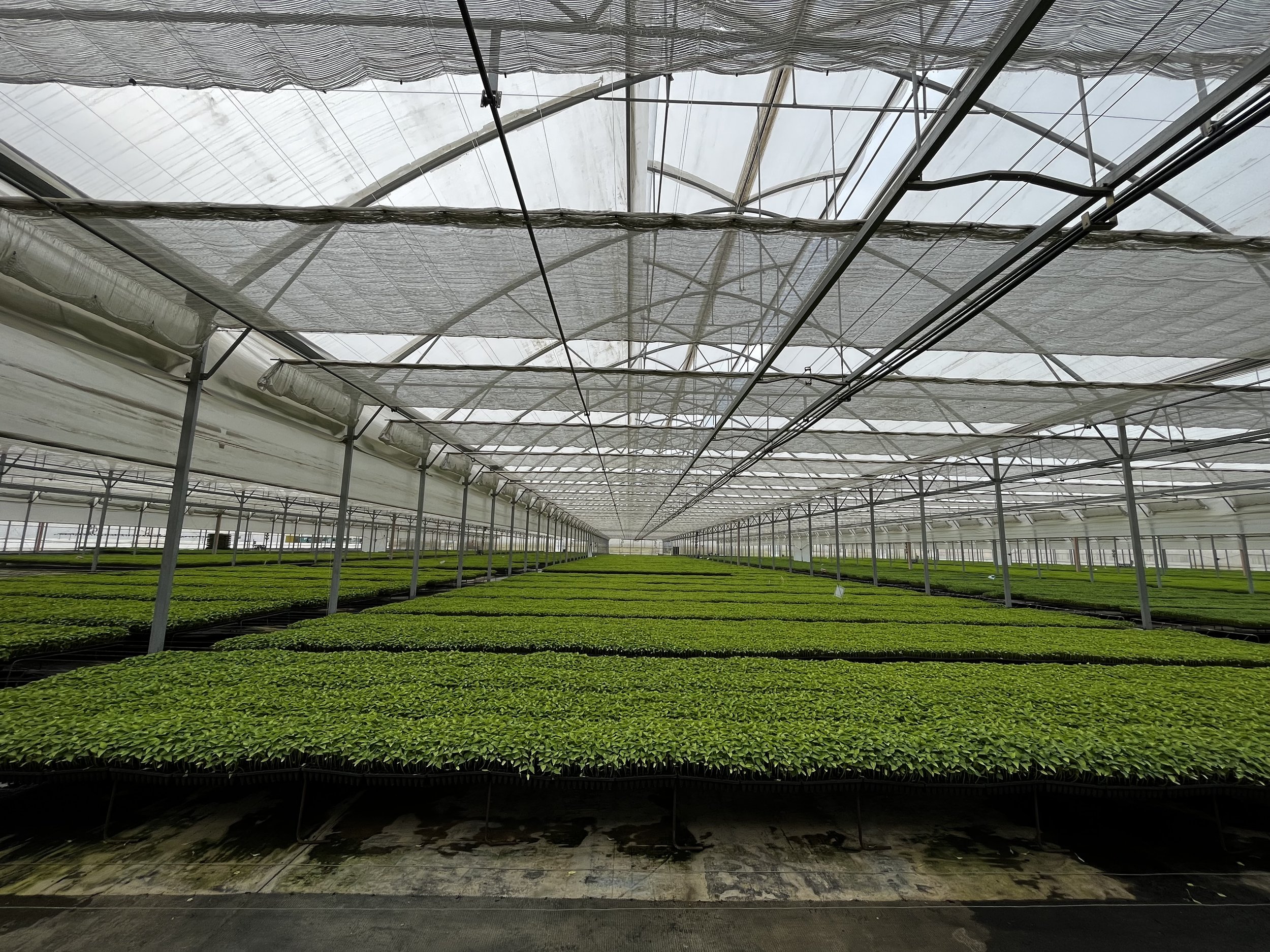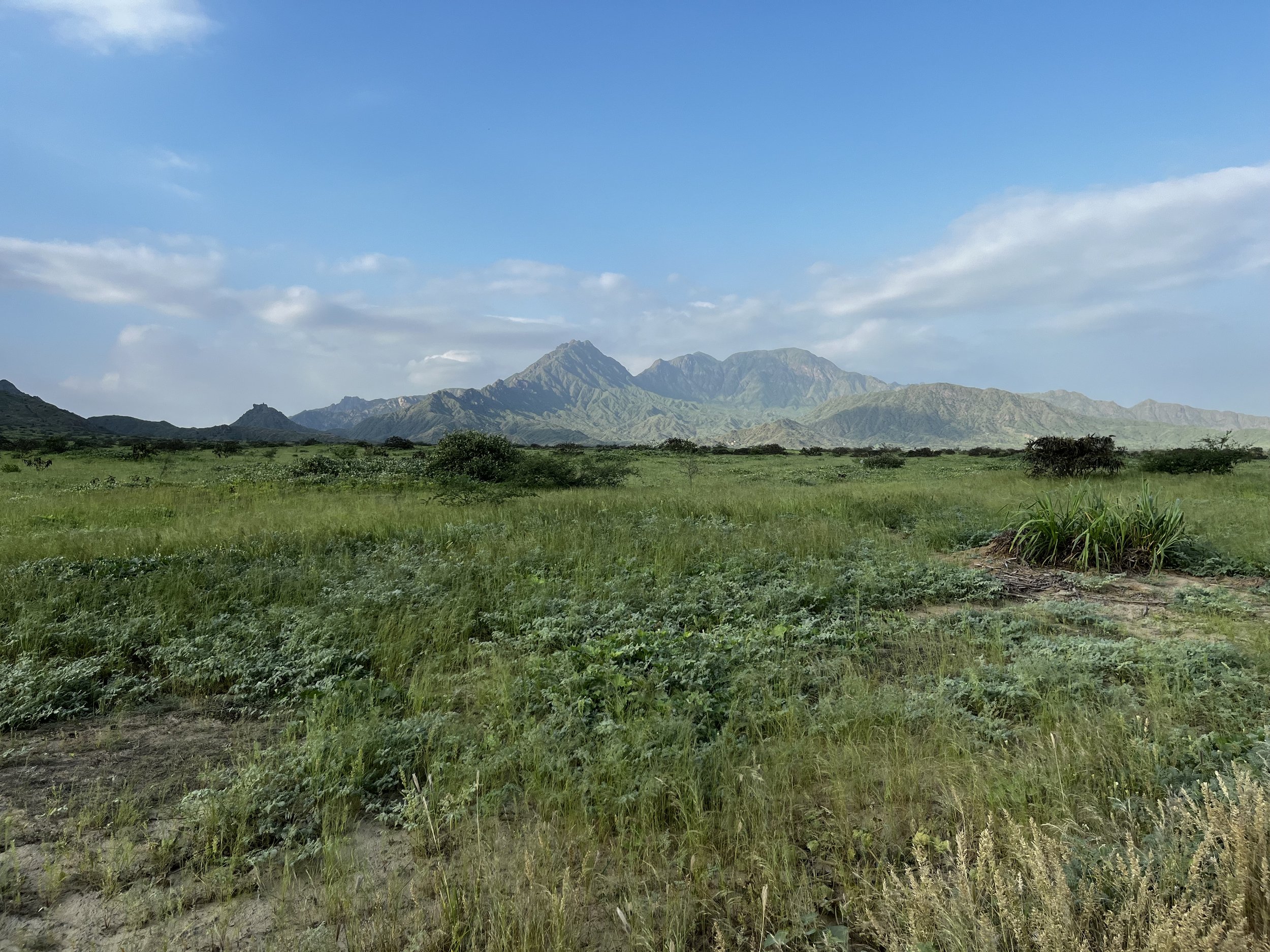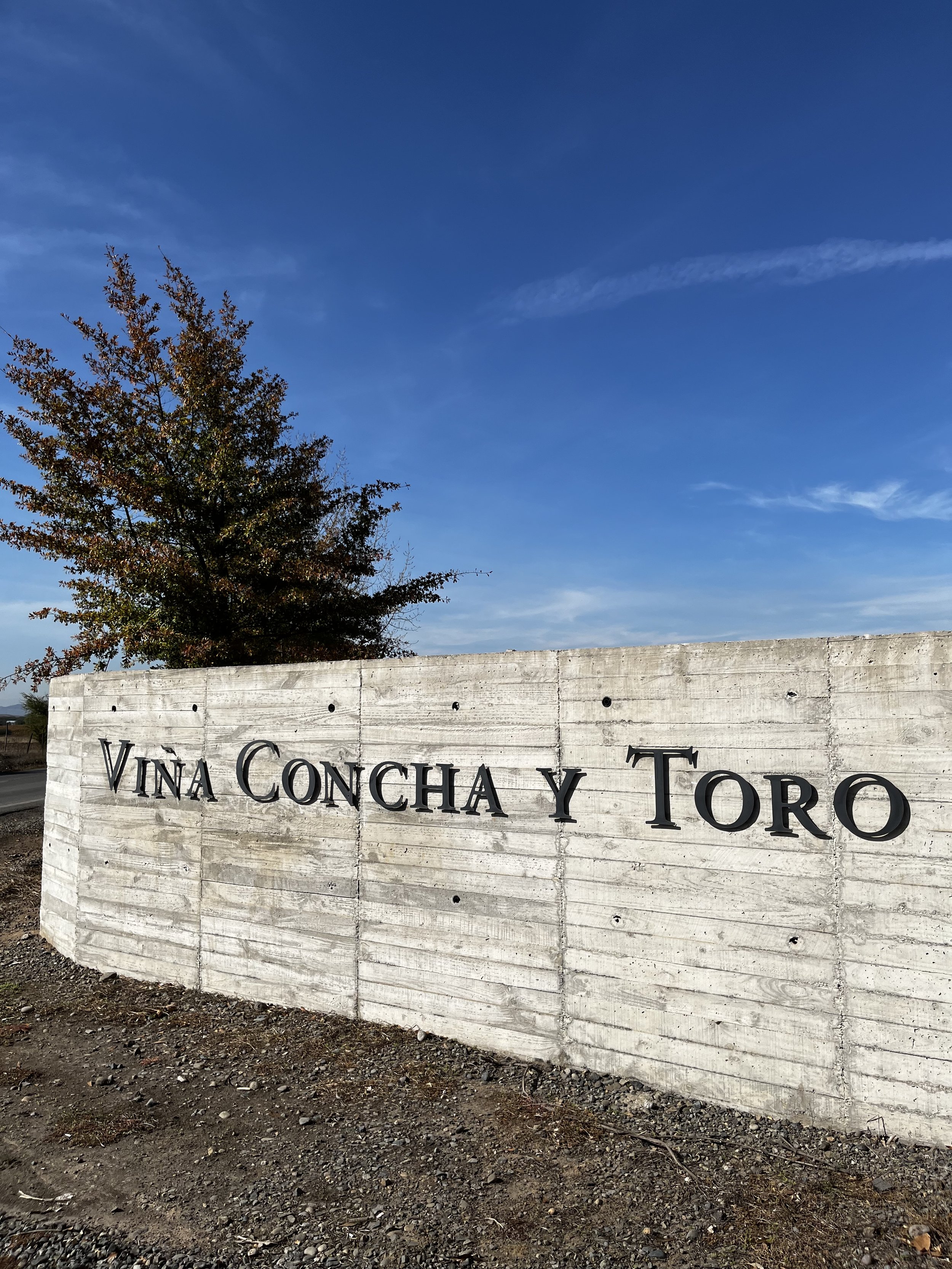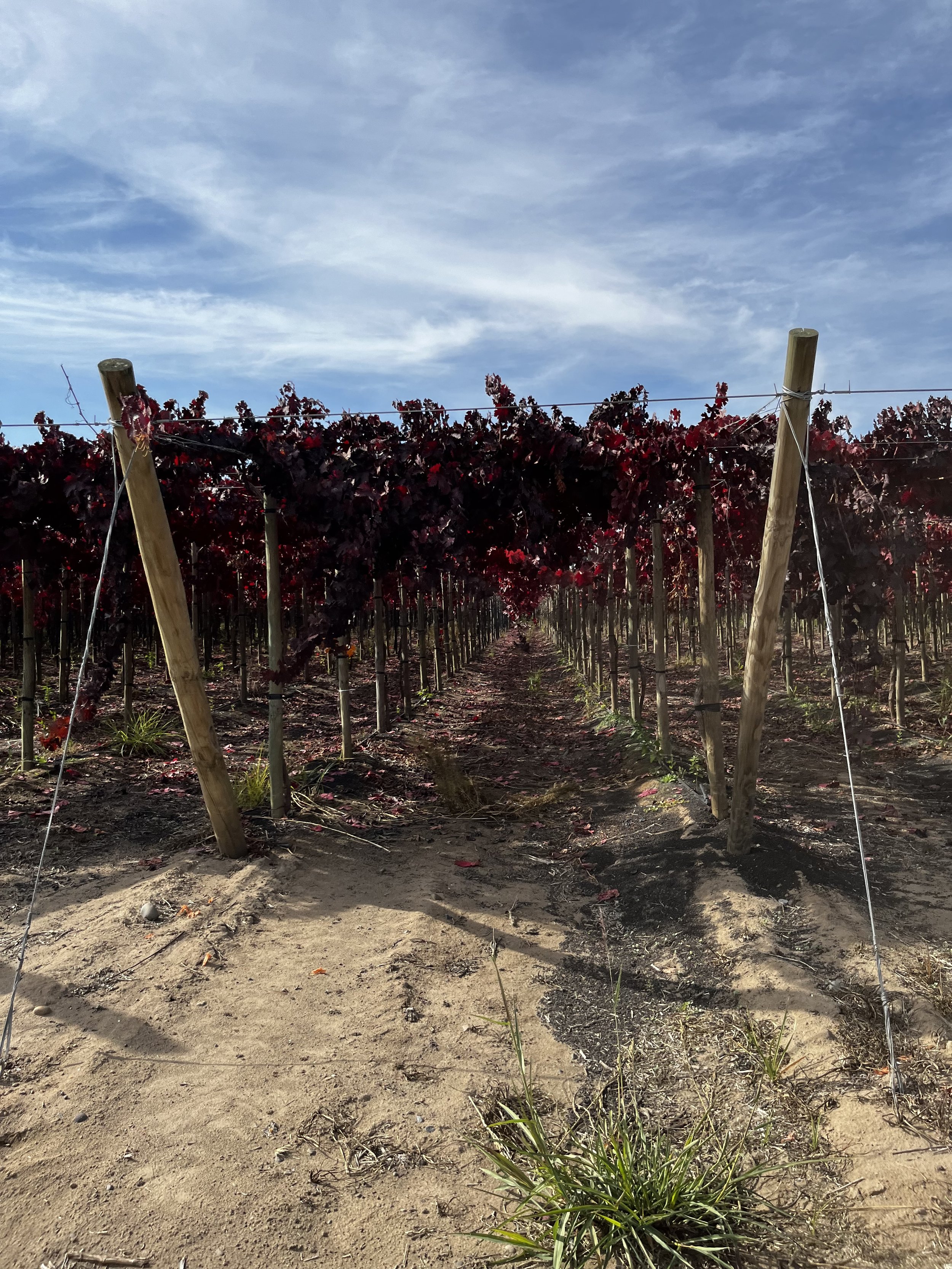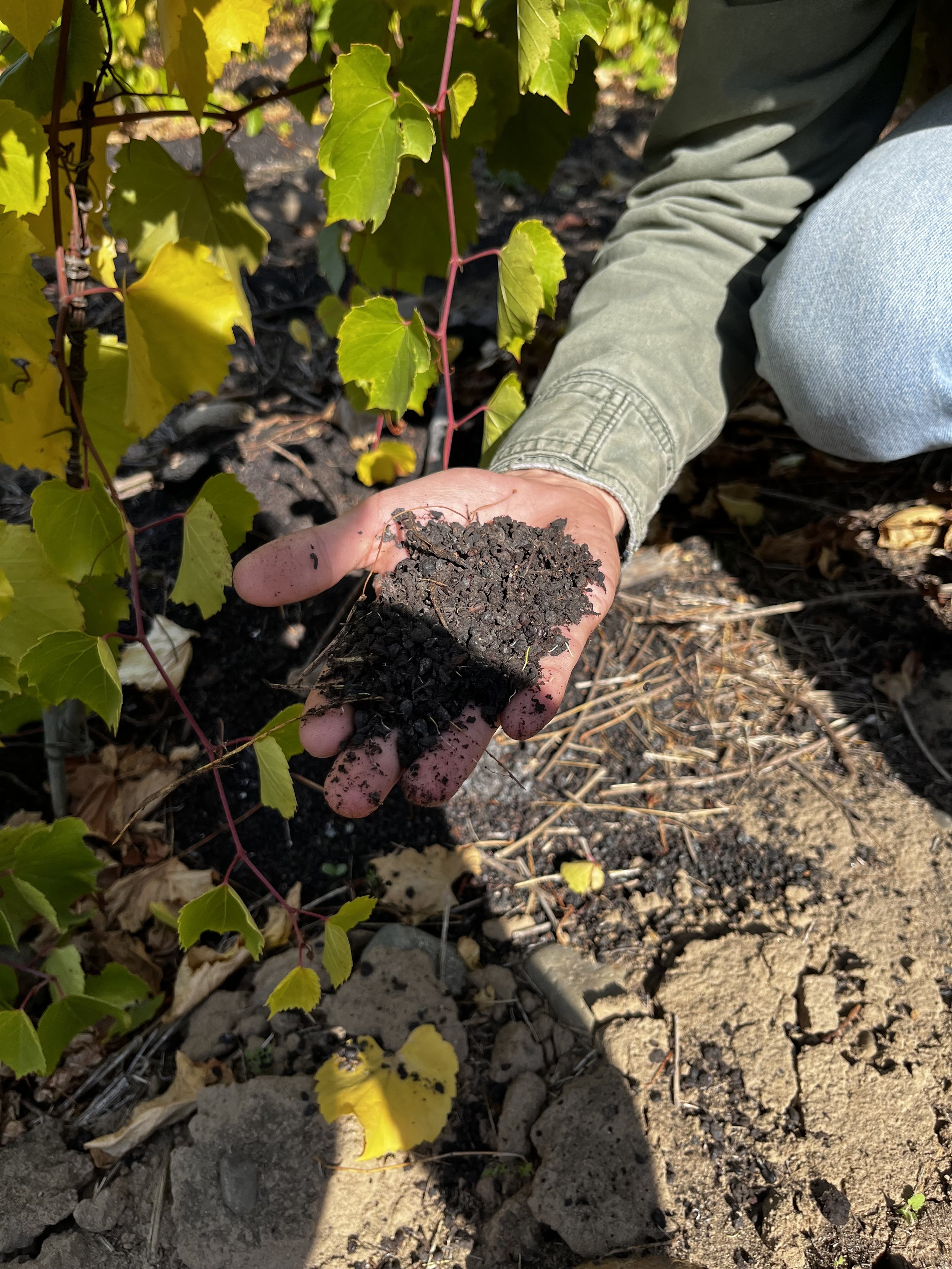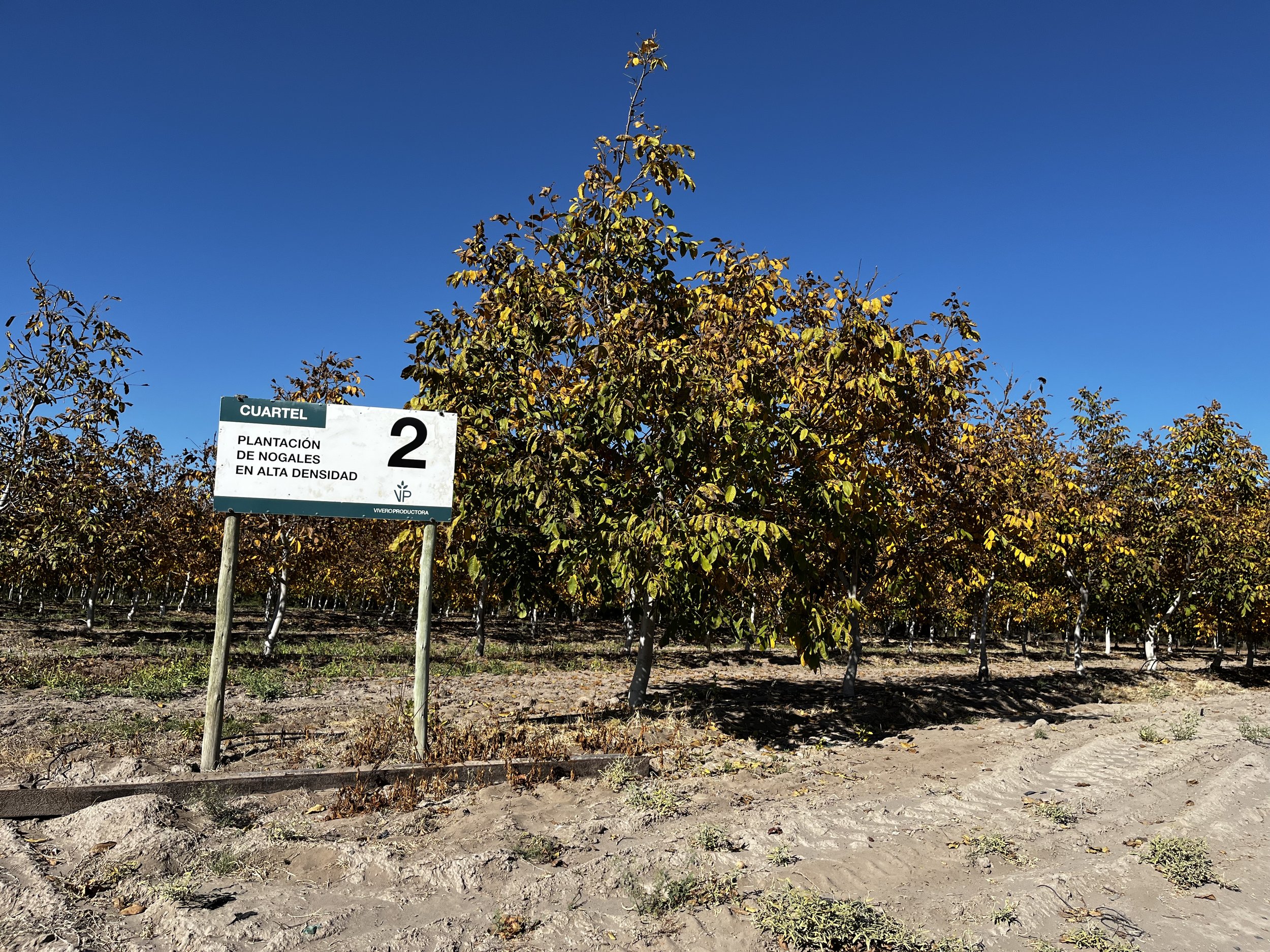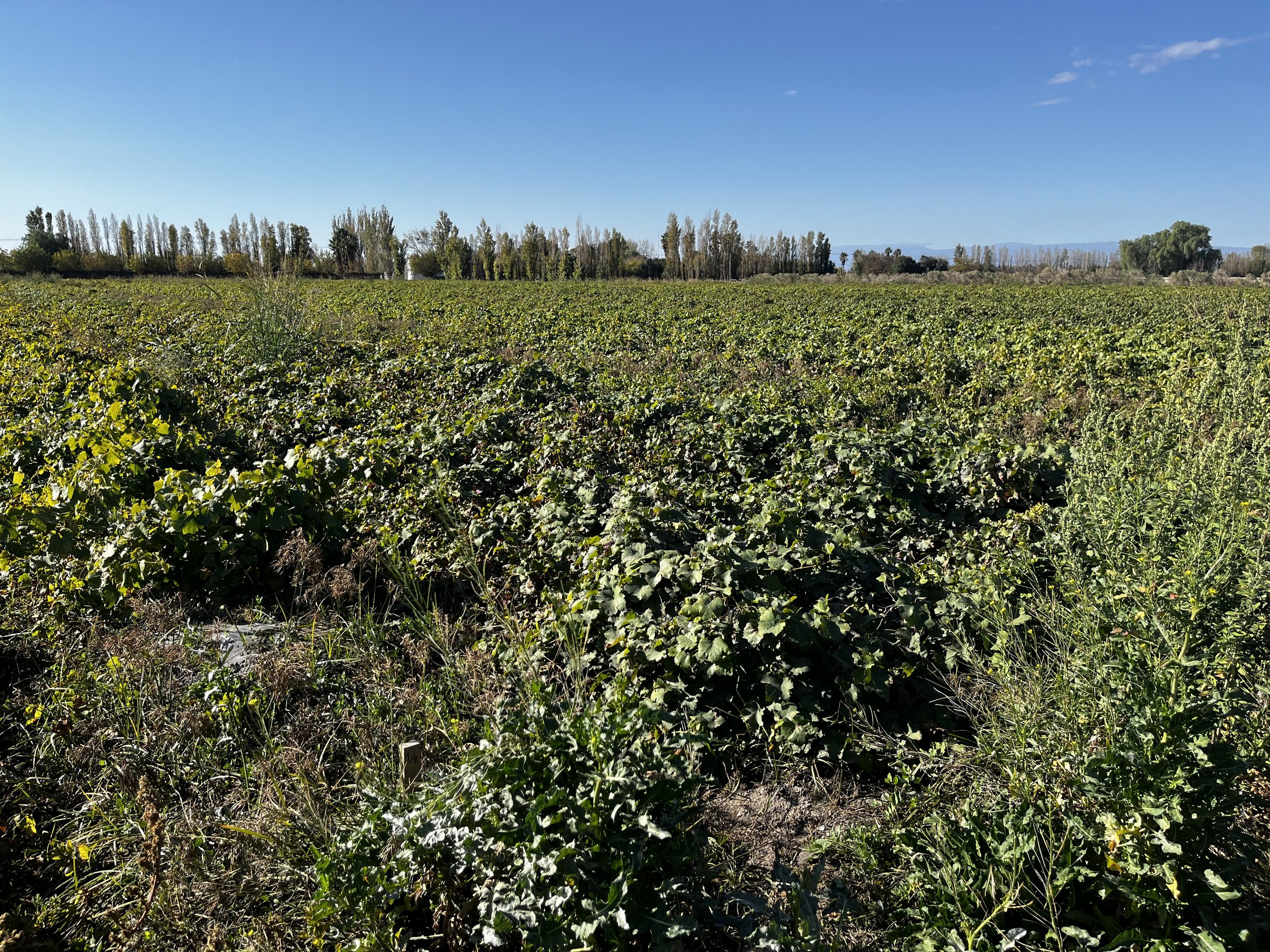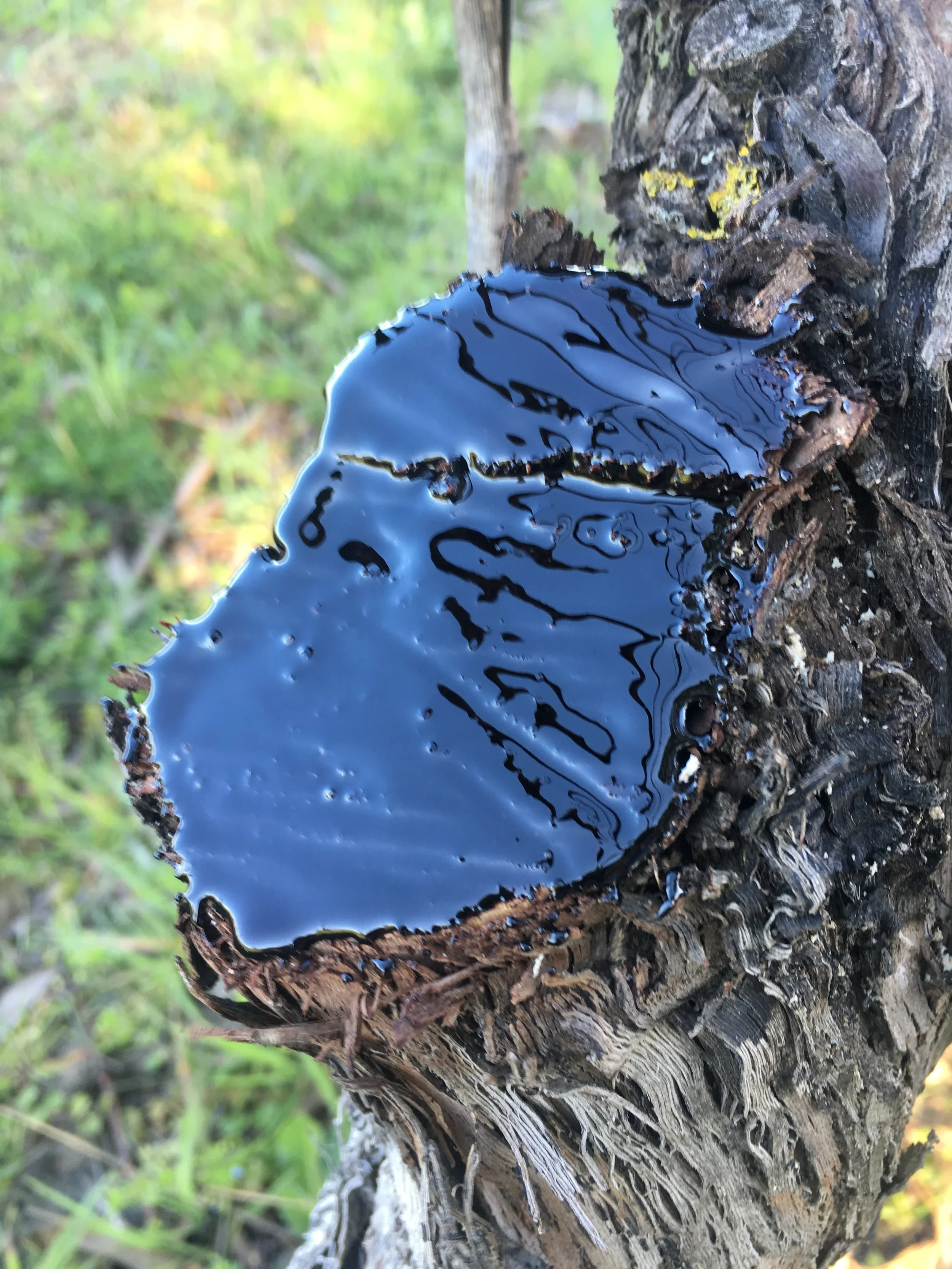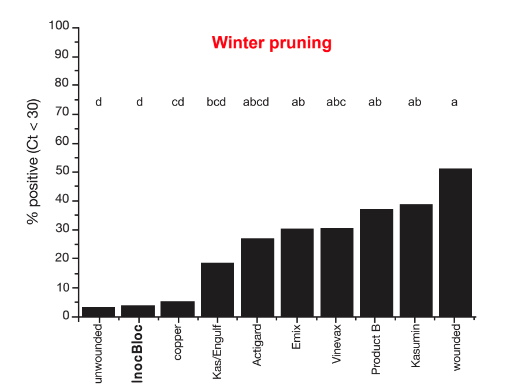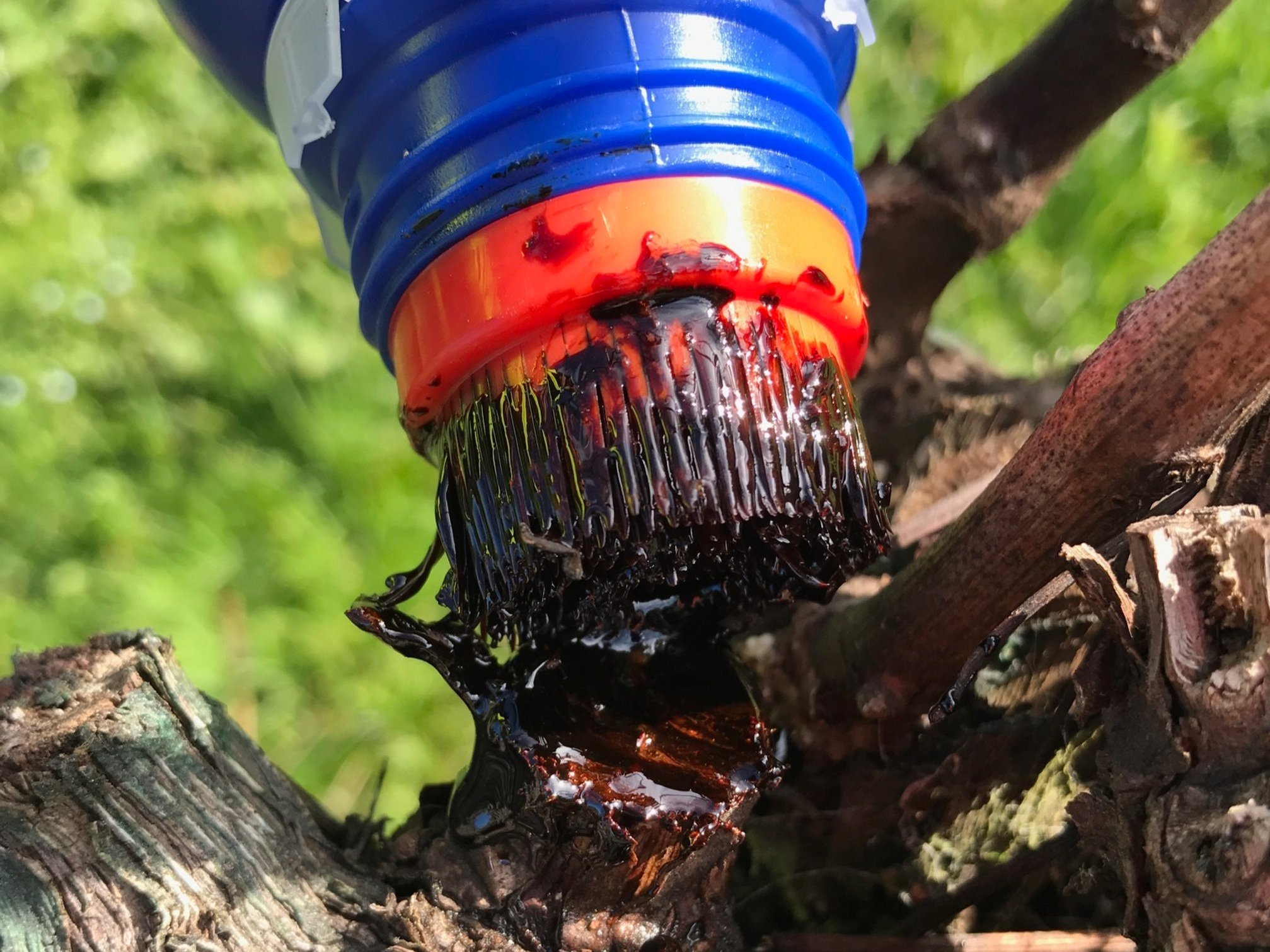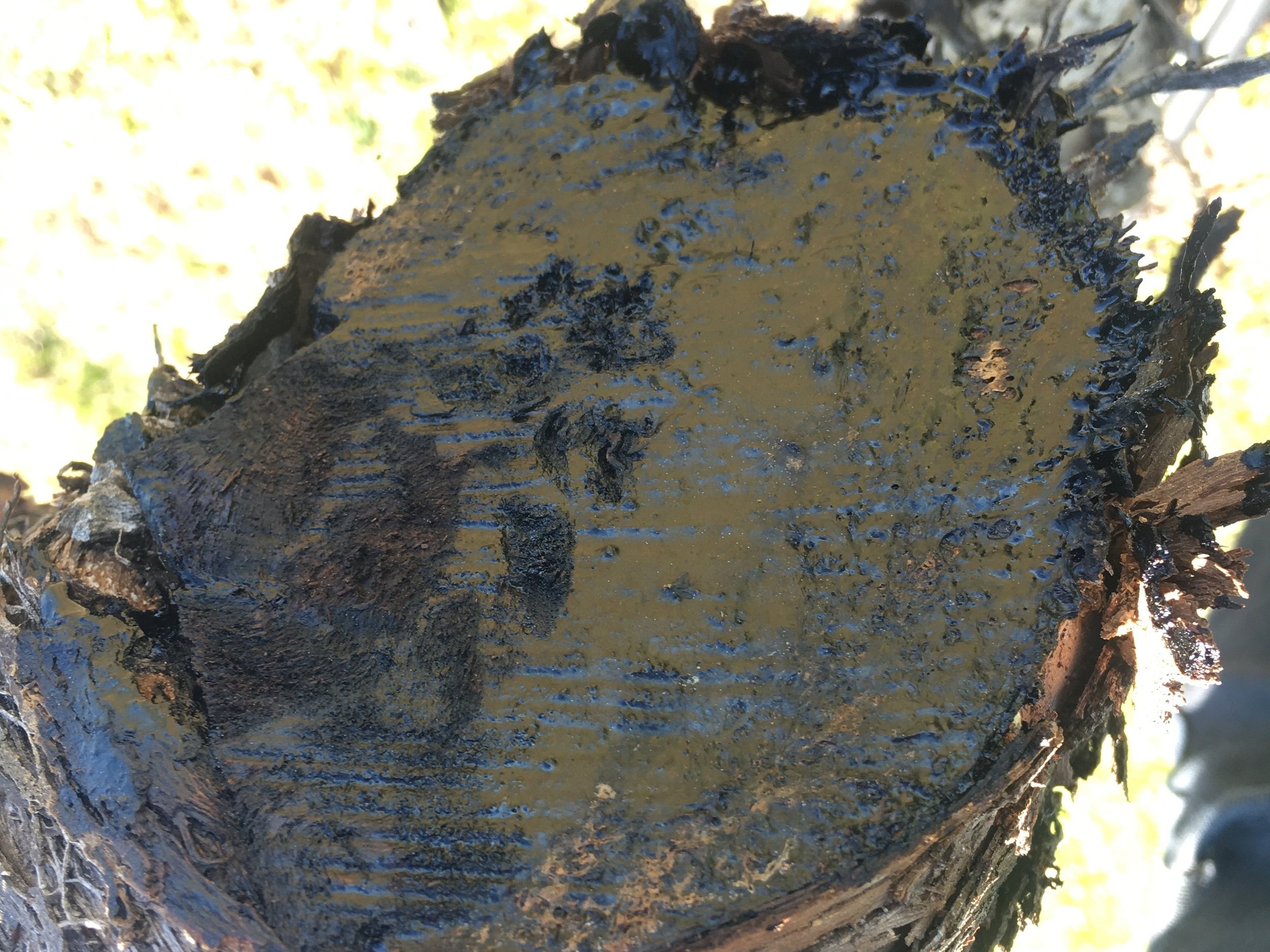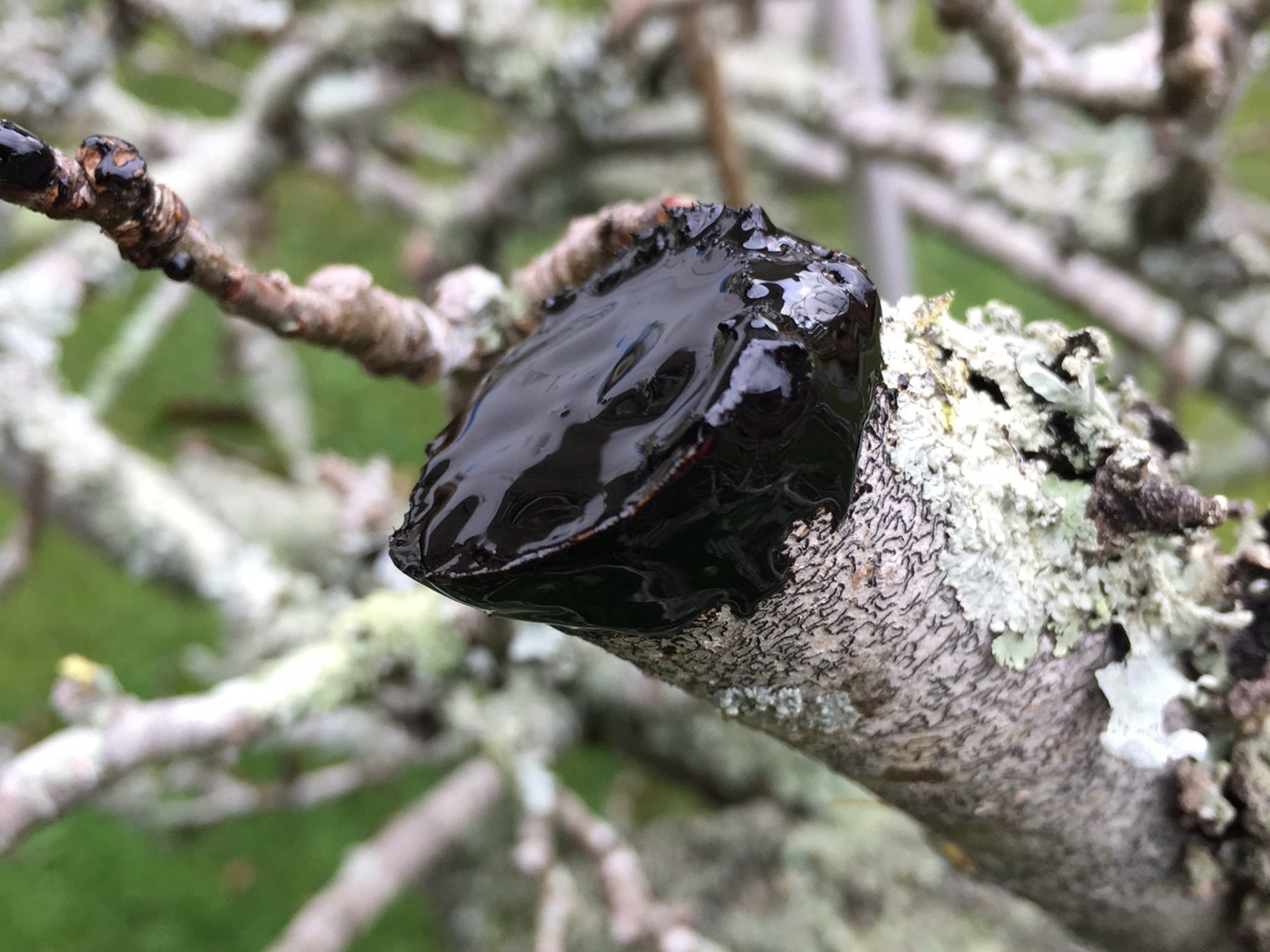From December 5 to 14t, 2024, we embarked on an enriching visit to Japan, invited by Teikyo University professor and nursery owner Joji Suda to speak at the ASAV Japan’s annual seminar. Traveling across Tokyo, Hokkaido, Yamanashi, and Tsukuba, the trip highlighted the challenges and opportunities of this still relatively unknown market on the international stage.
From December 24 to 26, 2024, Wax & Grafts proudly participated in Vinitech-Sifel, the global tradeshow for wine, fruits and vegetable productions, located at home in Bordeaux :-). This major event brought together thousands of professionals from around the world to shape the future of these industries.
Mexico is mostly famous for its beautiful beaches, cactus and… tequila. But it is also an emerging yet lesser-known player in viticulture. With 14 wine regions and 2,500 hectares of vineyards, the country grows a wide range of grape varieties, from red, including classic Bordeaux grapes (cabernet sauvignon, merlot) and Mediterranean favorites like grenache and syrah, to white like chardonnay and viognier.
The French Vine Nurseries Union held its annual congress in Reims from 17-19th October. French nursery production, together with Italy, is the largest one, not only in Europe but also worldwide. Last year, 220 million plants were grafted, a bit less than the previous year (about 230 millions). The aim of this meeting is to make a state of the current market situation and future trends, but also to share information about innovation, regulations or new projects. Here is a sum up of this meeting.
Grapevine plants demand is now evolving
For 20 years, production has remained relatively stable : with a peak at 300 million plants back in 2003, production fell down in 2008 further to the economic crisis, and then increased constantly until now and stabilize. Grafting is expected to slow down in 2024, as a consequence of difficult climate conditions and tough economic situation. Bordeaux area is the most severely hit by the crisis as red wine consumption has dramatically decreased and wineries have failed to sell wine for the past seasons, hence an overproduction and high level of stock.
What comes out is that the demand for white varieties is growing (UGNIBLANC used for Cognac + CHARDONNAY for Champagne) while the demand for red varieties is going down every year (Cabernet Sauvignon and Merlot).
Demand for new resistant varieties is also slightly growing every year.
Demand for white varieties is growing
While demand for red varieties is going down.
Climate change is the biggest challenge nurseries will have to face in a very near future.
Heavy rain, hail, frost or on the contrary drought cause many diseases in the vineyards.
As the government limits the use of chemicals in the vineyards, it is getting more and more difficult to fight diseases, such as powdery mildew, oedium, flavescence dorée or esca. Xyllela is also a big threat, although it mostly affects orchards.
In order to fight these, ENTAV-INRA has developed new resistant varieties. But these varieties will need to be added to the AOC (appellation d’origine contrôlée) requirements and some varieties are still being tested.
New resistant varieties have been grafted
Between 4 and 5 millions in France each year since 2021.
Also, nurseries are seeking new solutions in order to prevent the plant materiel from being infected at an early stage. Consequently, there are 3 major projects of insect-proof greenhouses :
One of these will be monitored by ENTAV-INRA at Domaine de l’Espiguette, at le Grau du Roi, which is the national plant material propagation centre.
Another one will be monitored by Chambre d’Agriculture de la Gironde at Blanquefort, close to Bordeaux.
Eventually, another project should take place in Champagne area, gathering two other regions (Bourgogne and Beaujolais).
The European Union is financing these projects with the help of local regional councils and the french government.
Also, nurseries are aware they will have to use greener practices as the demand for organic plants is growing. It only represents a small percentage but it is due to increase as the government urges wineries to plant organic vinyeards and produce organic wine.
In this context, interest in natural wax is growing since its use might be a condition to produce organic plants in the future. The natural bee wax for grafting developed by SER is currently tested by different Chambers of Agriculture through the French territory. Results should be available in 2024, when this wax had been tested in different countries last year and shown, until now, pretty good results.
It had been a while since we had visited South American nurseries (4 years, except Brazil) and have had some feedback about their needs. This time we went to Peru, Chile and Argentina.
We didn’t know what to expect further to post-COVID political and social crisis, and now global inflation. Climate change also deeply affect these countries, with severe droughts in Chile and Argentina and heavy rain in Peru, forcing them to adapt their strategies.
Viveros Genesis, Peru
First stop was Peru, which is the country that looked having the most dynamic economical growth. We visited there Viveros Genesis. It is one of the biggest nurseries in Peru, producing vegetable seedlings, mostly peppers (which demand is exploding), fruit plants, among which citrus, avocado, berries and grapes, and forest plants.
Concha y Toro, Chile
Second stop has been Chile. There we visited Univiveros, Nueva Vid, which are major nurseries and eventually Concha y Toro.
Concha y Toro is the biggest winery in Latin America. It has its own nursery and Research Center in Pencahue, close to Talca, 3 hours south of Santiago de Chile. They graft 1 million plan every year for their own needs.
Chile is more and more concerned by climate change : Like Concha y Toro , companies introduce greener practices in vineyards, such as using shredded vine shoots to cover soils, but also planting organic vineyards to meet increasing demand.
Argentina, Mendoza & San Juan
Argentina was the last country of our trip, where demand remains stable both on domestic and international markets, in spite of a chaotic economical and financial situation.
We visited Viveros Productora, Valle Verde/Guillaume, Viveros San Nicolas, all situated in Mendoza region.
Viveros Productora is one of the biggest nurseries in Argentina close to Mendoza, were they use Starwax in nursery fields. They also produce pistachios, which seem to be a promising market, with in vitro propagation.
Still in Mendoza wine region, we visited big wineries, which all set up their own nursery in order to secure their own grafts supply : Zuccardi were the first, followed by Trapiche and lastly Catena Zapata.
Their main concern is also to get new virus free blocks of rootstocks and varieties, so they are all planting new vineyards.
Catena Zapata’s free virus zone
Finally, 3 hours from Mendoza, our last visit took us to Don Peto and La Rinconada nursery, in San Juan, a very dry region. They produce there only raisins grapes, whose demand is in constant growth.
Viveros La Rinconada, San Juan
To sum up, all these countries need to face real challenges, from a decreasing wine consumption to climate change and the necessity to adopt more environment friendly practices. Lack of labour and market change, such as pistachio and raisin but also organic wine high demand, require to all nurseries adaptability and innovation in order to survive.
Second batch of trials has been conduced this year among 6 european nurseries :
Rebschule Scheiblhofer in Austria
Kun Nursery in Hungary
Jidvei nursery in Romania
Multivitis in Switzerland
Ioannis Politikos In Greece
Covidaï in Spain
Grafted vines with organic wax during and after planting at Jidvei Nursery, Romania :
Results of trial
Nurseries have rated bee wax following 7 different criterias. They all seem very satisfied since its general performance has a very good 4,3/5 rating :
Visual appearance : excellent (2,8/3)
Smell : nice (2,6/3)
Easy to use : as easy to use as conventional wax
Adherence before planting : 4,4/5
Elasticity : 4,2/5
Callus protection : 4,4/5
Estimate success rate (average of nurseries) : 54%
General performance : 4,3/5
A melting point to be improved ?
A recurrent observation says that wax melting temperature seems slightly lower, which means that its use might not be appropriate for nurseries located in regions with very high spring temperatures :
“The soaking temperature of the organic wax must be well idetificated. If the temperature is higher than it is appropriate the coverage is very thin so the protection is not effective even on the rootstock surface and even on the callus.”
However, no nursery observed any problem due to callus protection this year since it has been rated 4,4/5.
The price, a prohibitive factor for organic wax? Maybe not for long…
Bee wax price has been so far much higher than paraffin wax. But now due to the petrol crisis that has emerged with the Russo-Ukrainian conflict, this gap tends to narrow.
Look at our 4 reasons wax organic wax is the future :
To be continued…
In October we’ll visit the Romanian nursery Jidvei which is the nursery that have made the biggest organic wax trial so far… and has probably the most significant results.
Other results coming out from Southern Hemisphere
Southern nurseries also interested by this new product began to send us feedbacks
Ormond Nurseries (New-Zealand) have now ended first trial : they found out bee wax provided nearly same results than Cirka wax, even better sometimes (78.78% success rate with yellow organic wax vs 76,41% success rate with Cirka wax)
Ryset (Australia) has tested the organic wax on vines, but also on ornamental plants and fruit trees
PW Botha (South Africa) has ordered samples to conduct trials among various nurseries in Wellington
If you want to follow trial complete feedback follow us on social networks !
6 european grapevine nurseries have tried our new organic grafting wax this summer : Covidai (Rafael Gandia) in Spain, 13 Jul. Plantaze (Mirko Markovic) in Montenegro, Ioannis Politikos in Greece, SC Jidvei (Dan Corbean) in Romania, Kun Sandor (Agns & Sandor Kun) in Hungary and Philippe Borioli in Switzerland. We asked them to send us some feedbacks and photos of the trial, and they filled up two surveys, one after planting and one after digging.
Trial Final Results
We have compiled and compared feedbacks of the different nurseries that compared organic wax performances with usual wax they employ for planting. Here are the results :
Excellent appearance and smell, adherence and elasticity comparable to classic wax
As organic wax is made of bee wax, all nurseries agreed the smell was excellent. They were also very satisfied of wax visual appearance after digging : in fact, a third of them even considered appearance was greater than conventional wax.
On average, adherence as been considered as good as regular planting wax. This property has been better rated before planting though.
At least, some comments suggested to improve organic wax elasticity. This has be taken into account by the supplier who improved wax formula for next trials.
New formula has been developed in 2022
to improve adherence and elasticity.
Success rate are nearly the same
Nurseries had made a good success rate estimation, since they had exactly 59% success rate with conventional wax as predicted after planting.
Organic wax obtained a score of 57%. The main explanation of this difference is that one of the participants of the trial planted very lately this summer : consequently, as organic wax melts with 2 degrees less than regular wax, sucess rate was lower than plants with regular wax, although global success rate was already quite low.
Comparison of organic and conventional wax success rate before and after digging
To be continued… in 2022
In conclusion, all nurseries participants have been very satisfied with organic wax, that seems to fulfill requirements to be a good and natural alternative to microcrystalline wax. All of them want to pursue a new batch of trials this year, this time using this wax at the three waxing steps of grapevine plant production : grafting and stratification, planting and commercialization. By this time, we are eager to know what are the results of first trial in southern hemisphere !
Pine tar paste is a natural and simple way to help heal pruning wounds and protect from various trunk, cryptogamic and bacterial diseases. Wound protectants made of pine tar such as InocBloc® have proven their efficiency, particularly on vines, kiwi trees, avocado and apple trees.
Pine tar pruning pastes are the most efficient to control many diseases, according to various studies
In 2010, the French Vine & Wine Institute (IFV) made a study during two years to compare the effectiveness of different types of coastings (Escudo, Pine tar, wood stain, vegetal oil and resin) against eutypiosis trunk disease :
Outstanding results
Effectiveness of wound protectants against eutypiosis, 15 days after protection.
“Compared to Escudo (...) which was banned because of its toxicity, pine tars are equally effective, and even more when the wounds are subjected to high rain levels. The other products such as stains or those made of vegetable oils and resins, show almost no efficiency. Even if visually these different stains look more resistant than pine tars several months after the protection, they do not offer the same protection level.”
In 2016, Plant & Food Research has conducted a trial comparing the effect of 9 different products including pine tar (InocBloc®), cooper and other wound protectants on PSA, the kiwi fruit tree disease caused by a bacteria. It appeared that InocBloc was the most efficient product to protect kiwi trees after winter and spring pruning :
In 2018, other peruvian research center Fitonsanidad Peru has proved pine tar efficiency over Lasiodiplodia theobromae fungus responsible for various diseases in cocoa, mango, grapes, papaya, and even citrus trees… the product was compared with two other pruning pasted and obtained better results in various conditions.
InocBloc® from Grosafe® is the only organic certified pruning paste on the market
New Zealander company Grosafe has developed and obtained an organic certification for this pine tar pruning paste. It can be used on all fruit and ornemental trees, but also on grapevine to prevent trunk diseases. Its brush facilitates application on pruning wounds.
Moldavian company Agrodor has also been commercializing the wound protectant to apple tree orchards for many years
Thermotherapy is the most efficient way to eradicate bacterias and phytoplasma responsible for grapevine diseases such as Xylella fastidiosa or flavescence dorée. In some french regions, this treatment is mandatory before planting. Recent studies are also proving thermotherapy efficiency over grapevine trunk diseases.
How is hot water treatment realized ?
Plant material (rootstocks and scions before grafting of entire grafted plant after grafting) is immersed in hot water (50°C / 122°F) during 45 minutes.
Thermotherapy machines
Our partner Chauvin Agro have built hot water treatment machines specially made for grapevine treatment.
CHAUVIN AGRO
TEC Machine
> brewing system for homogeneous temperature
> automatic water leveling
> easy to load and reload basket
Barry-Callebaut is the world leader in cocoa and chocolate production with 7 bilions annual sales and 1200 employees around the world. The company produces its own cocoa plants in Uruçuca unit in Bahia, Brasil. So far, the grafting technique has always been 100% manual with buddy tape and was generating 350 000 grafted plants / years.
Omega grafting trials to boost productivity
As manual grafting generates high labor cost, Barry-Callebaut started to think about a way to increase productivity. In fact, the company is ambitious and wants to increase production to 6 million plants / year from 2026. As omega grafting technique allows automation and also reduces costs thanks to the use of wax, they started to think about applying this method to cocoa plants.
Because Wax & Grafts offers a range of the best products for grafting and is present in more than 40 countries, Barry-Callebaut contacted us to see how we could help them to set up an experimentation.
The trial started in 2021 in collaboration with Wax & Grafts
At the beginning of the year, we sent to Uruçuca unit grafting material and waxes, and the staff grafted a bunch of ocoa plants with omega grafting technique.
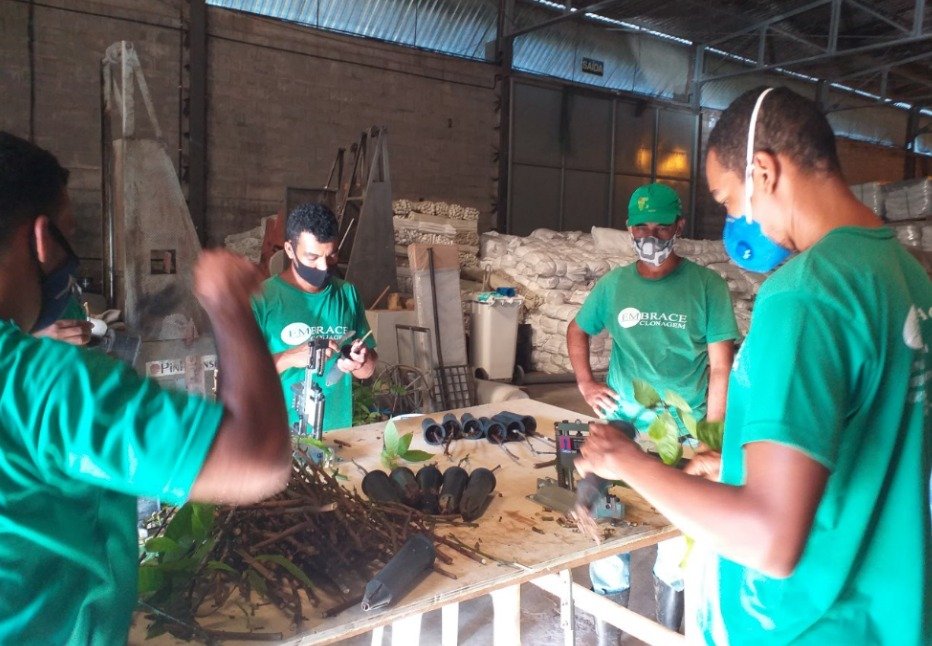
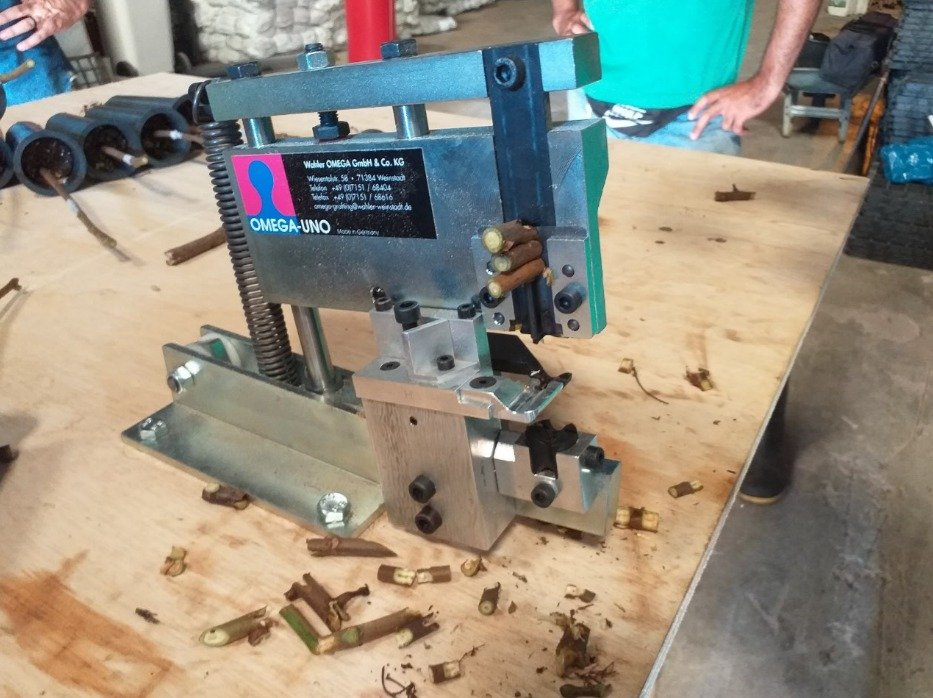
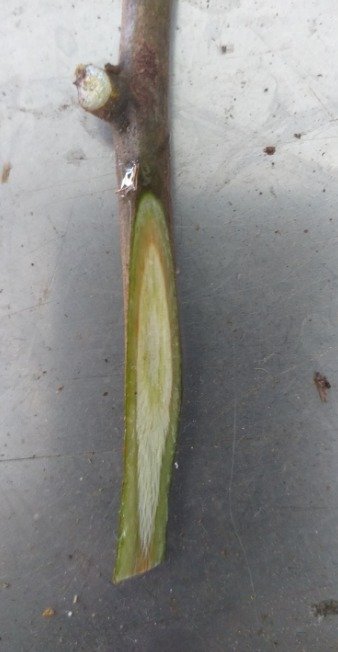
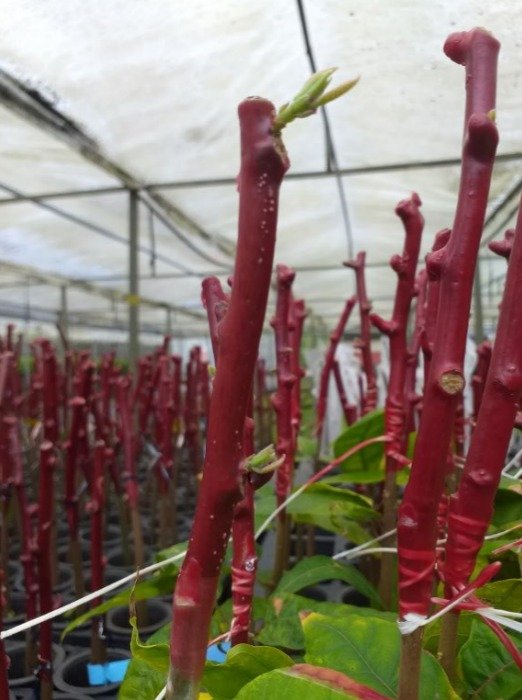
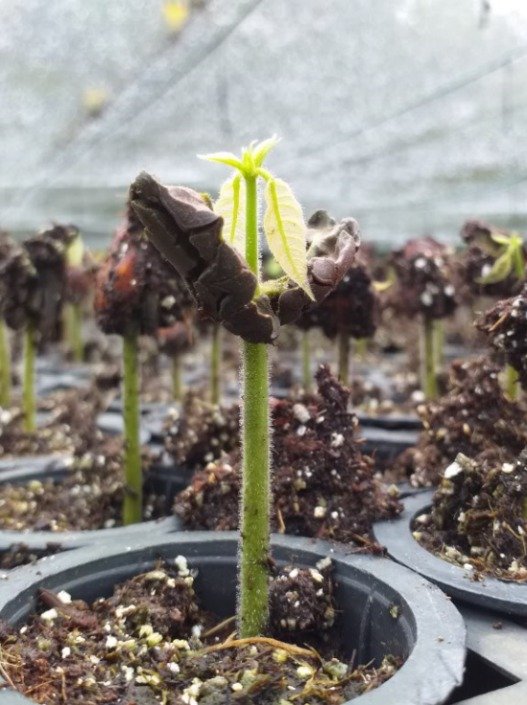
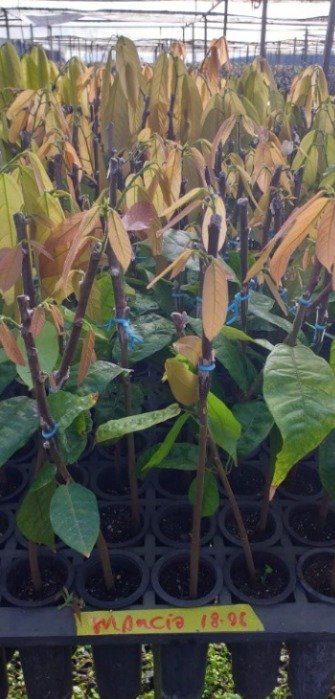
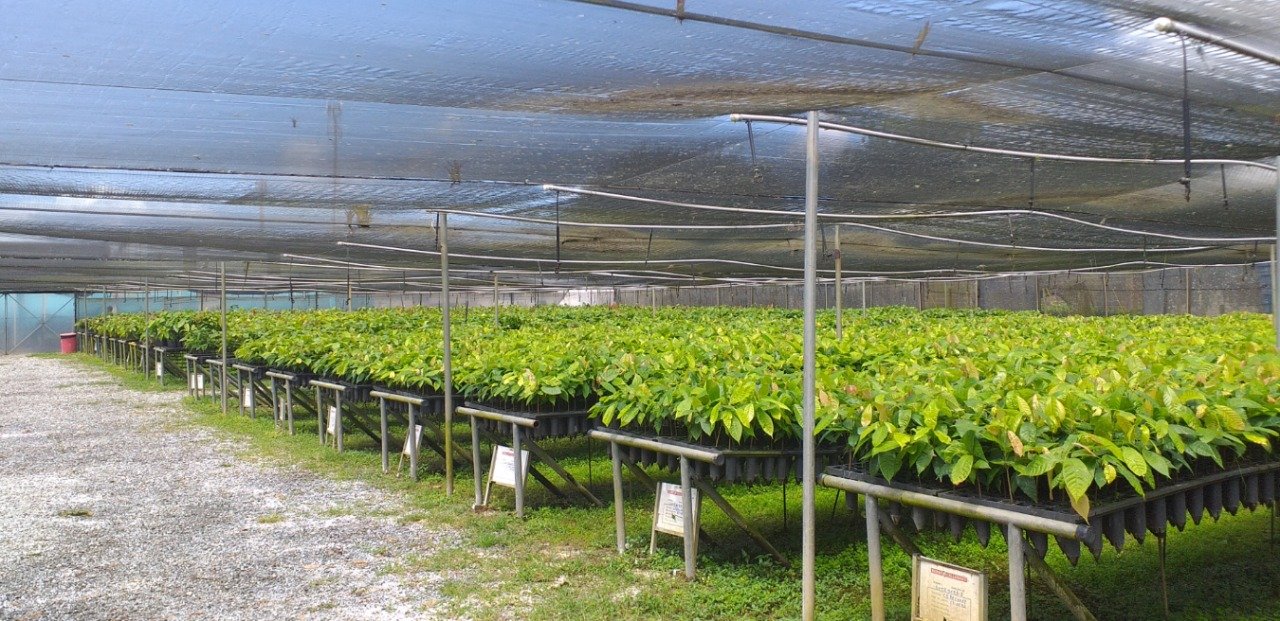
… in the end, the grafting trial turned out successful ! This discovery will definitely open new horizons for the whole cocoa sector… and for us too ;-)
6 grapevine nurseries have tried our new organic grafting wax this summer : Viveros Rafael Gandia in Spain, 13 Jul. Pantaze in Montenegro, Ioannis Politikos in Greece, SC Jidvei in Romania, Kunszolo in Hungary and Pépinière Philippe Borioli in Switzerland. We asked them to send us some feedbacks and photos of the trial.
Excellent appearance, adherence and elasticity
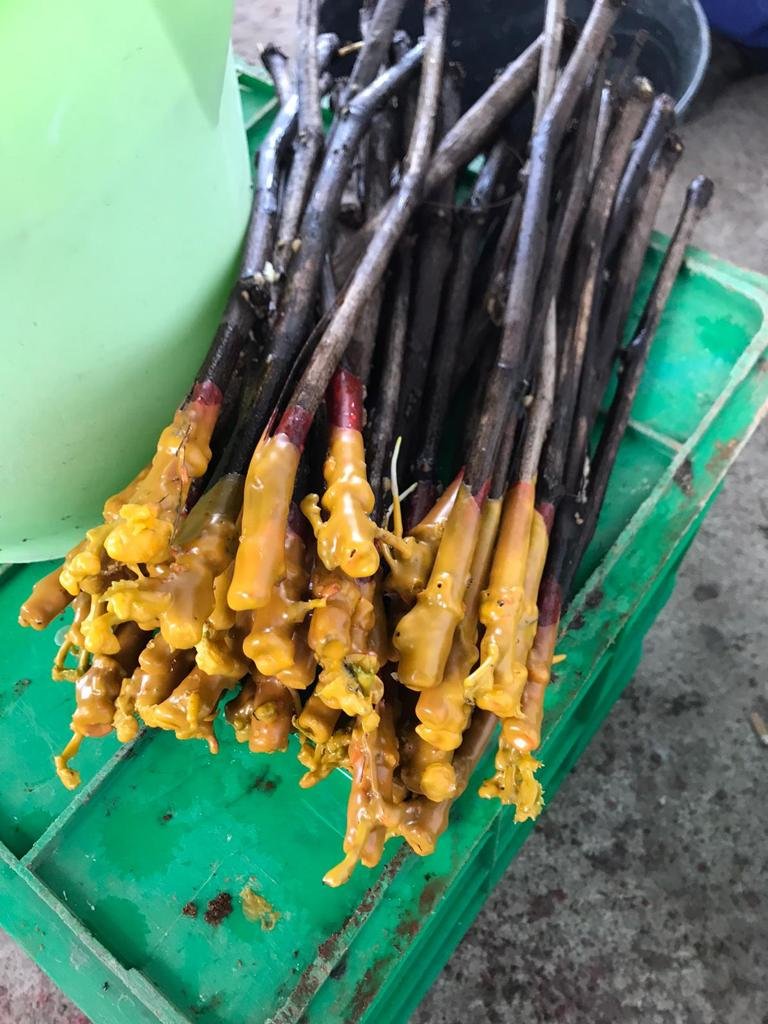
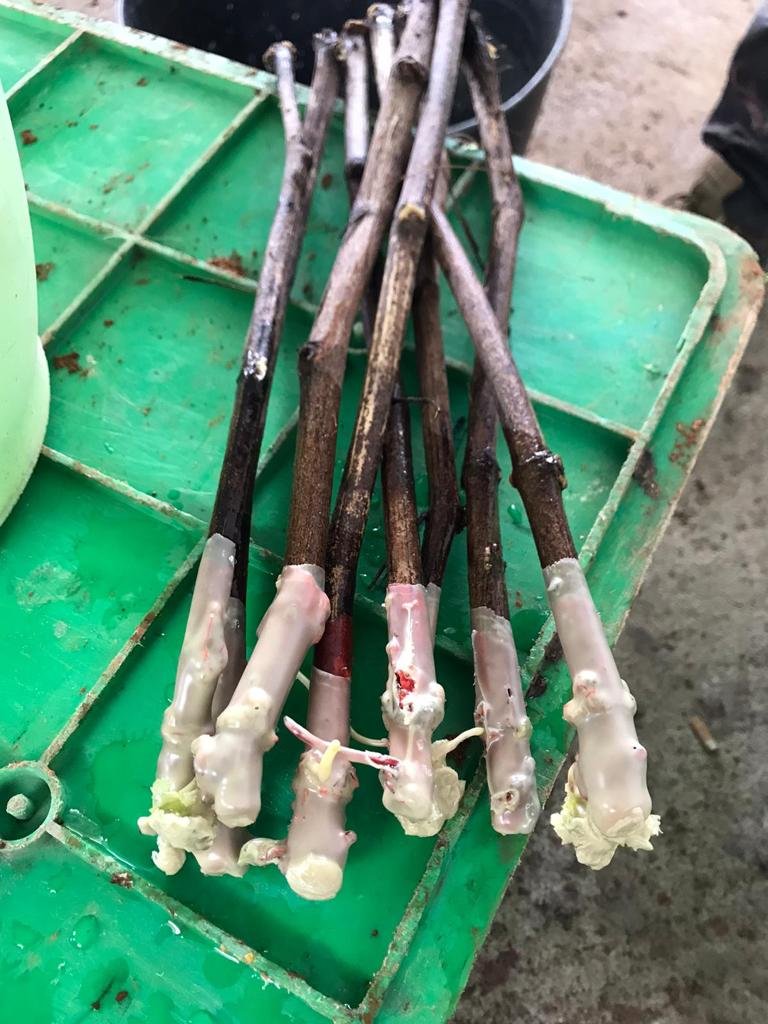
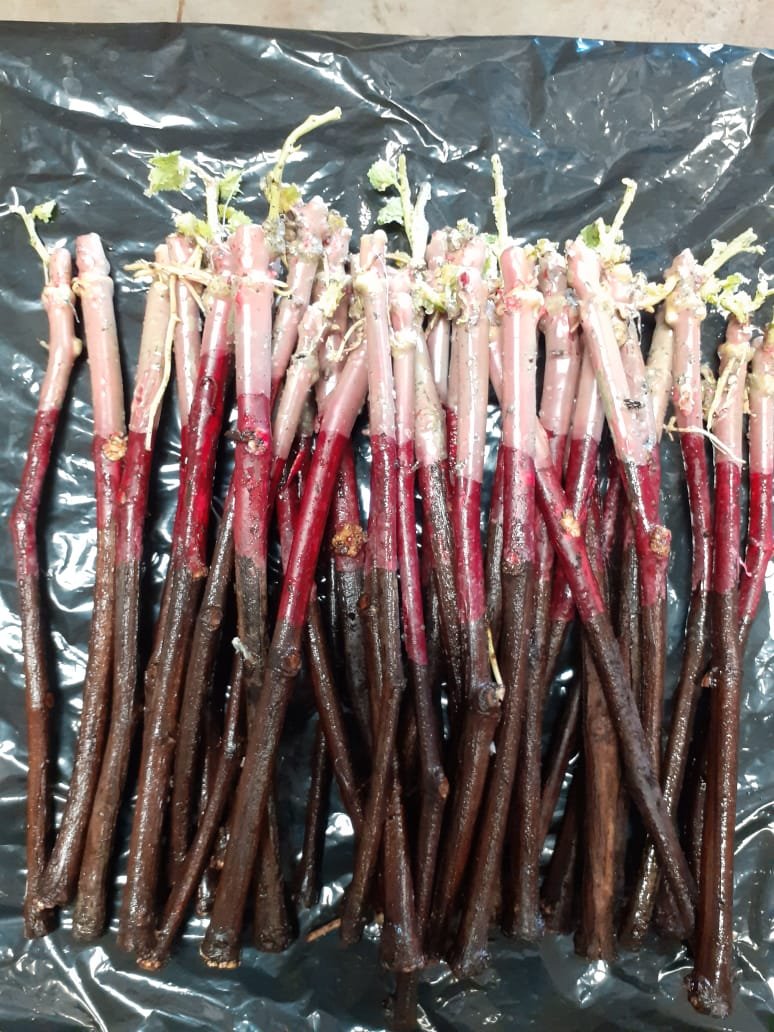

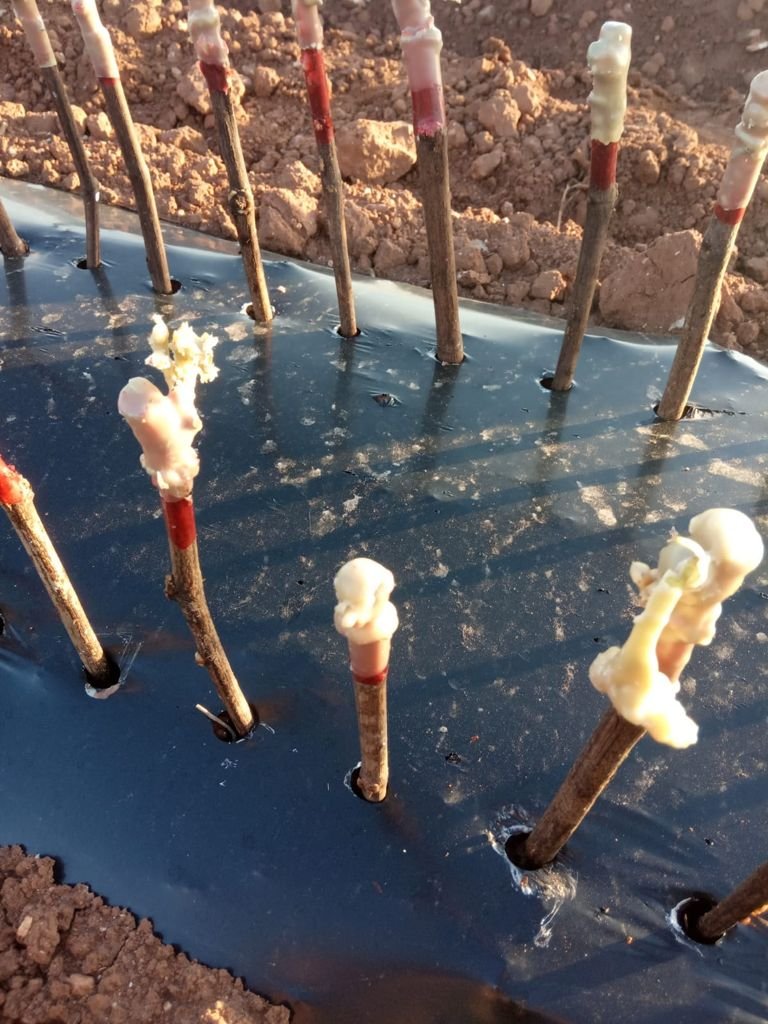
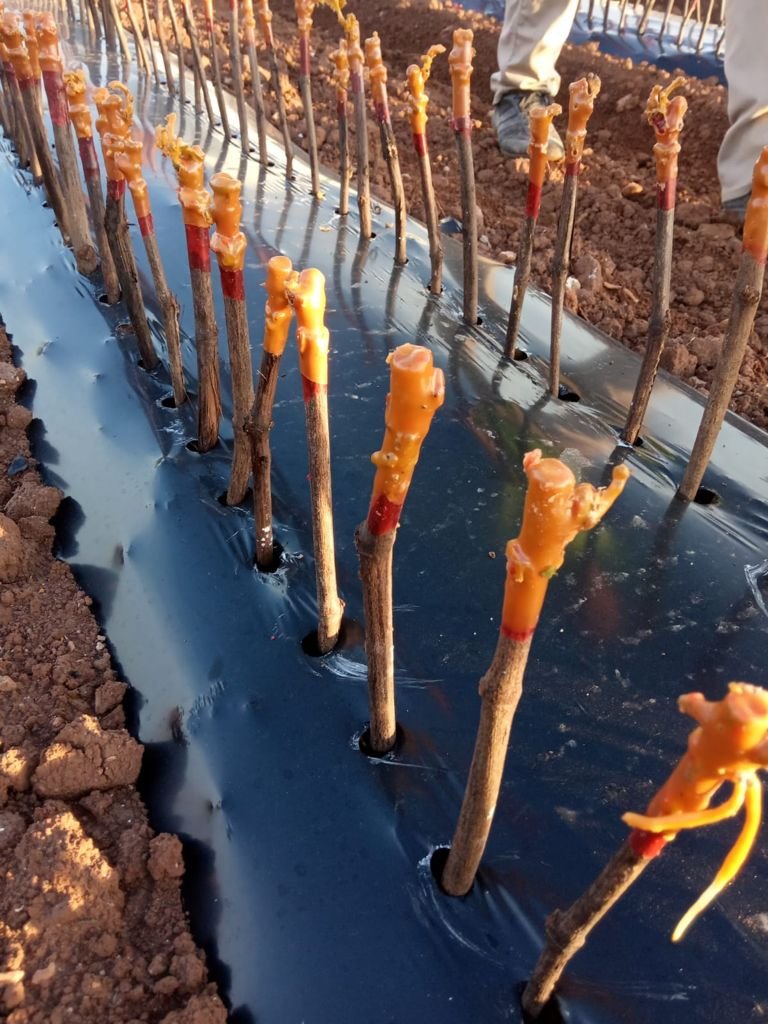
On a small survey, participants of the trial have rated different criteria :
Wax visual appearance was rated between neutral and nice comparing to other waxes
All nurseries qualified the smell as “nice”
Adherence criteria obtained an excellent score (4,6 out 5)
Elasticity was rated as good (4,2/5)
A lower melting temperature than classic wax : sufficient for callus protection ?
If all of the nurseries found the wax was as easy to use as classic wax, they also found out melting temperature was lower. For most of them, the wax provided sufficient callus protection when planting with moderate climate. However, it seems the wax cannot resist high summer temperatures and provide sufficient callus protection when planting lately.
In conclusion : a wax very similar to conventional wax… but organic !
Although nurseries are still waiting for digging before setting final conclusion over global grafting success rate, all of the nurseries agreed that this organic wax has potentially the same performances than conventional grafting wax. This organic wax could therefore be a green alternative to conventional wax !
To be continued…
Trials have now started in Chile 🇨🇱 and New Zealand 🇳🇿 : here is a bunch of grafted grapevines ready for planting !
🕘 Have you thought about ordering your disbudding equipment ? 😲
No worries ! We offer, though our partner Chauvin Agro a pretty range of rootstock and scion processing equipment.
CHAUVIN AGRO MACHINERY
Chauvin Agro offers through REC’S type C and DEM-C machines disbudding machinery and rootstocks cutting and counting machine.
Would you like to know more about these equipments ? We would be pleased to help you !
An experiment conducted by Dr. Ágnes Kun in Hungary to compare the effectiveness of different grafting waxes reveals "remarkable success" with Starwax.
STARWAX is a neutral microcrystalline wax to which aluminum microparticles (in a very small percentage) have been added to reflect UV and infrared rays in order to protect the developing callus.
The study compared performances of 7 various waxes made for different steps of the grafting process (callusing, nursery and storage). The study was conducted with two Hungarian grapevine varieties, “Pintes” and “Kadarka”. Each treatment comprised 25 grapevine grafts in 4 replications, and was compared to an untreated control batch for each variety.
“The best paraffin wax of this trial was Starwax yielding an outstanding final success”
Surprising fact : while the hormonal waxes did show a positive influence on callus formation, the study revealed that there was no significant relationship between callus formation and final grafting success ! However, Ágnes Kun points out that these waxes were developed exclusively for callusing and not for the whole process.
In conclusion, in spite of a late bud break probably due to its protective function, Starwax had a remarkable success : 72% for the Pintes variety and 90% for the Kadarka variety.
Starwax remains today the only wax of this type on the market.
Starwax is made for extreme climatic conditions
The wax has been developed by the French company CFCL in cooperation with the former Spanish laboratory Quimiwax (now Parafinas Quintanar). Starwax is now owned by SER Group and manufactured in Italy with the same technical characteristics and formulation.
Thanks to its great plasticity and a high melting temperature (about 80°C), it guarantees an optimal protection of the plants especially in strong sunlight. It gives excellent results in areas highly exposed to the sun such as California (see 2009 study), South Africa, Argentina, or closer to us, Romania, Hungary or even France (Mercier Nurseries have used it for years).









